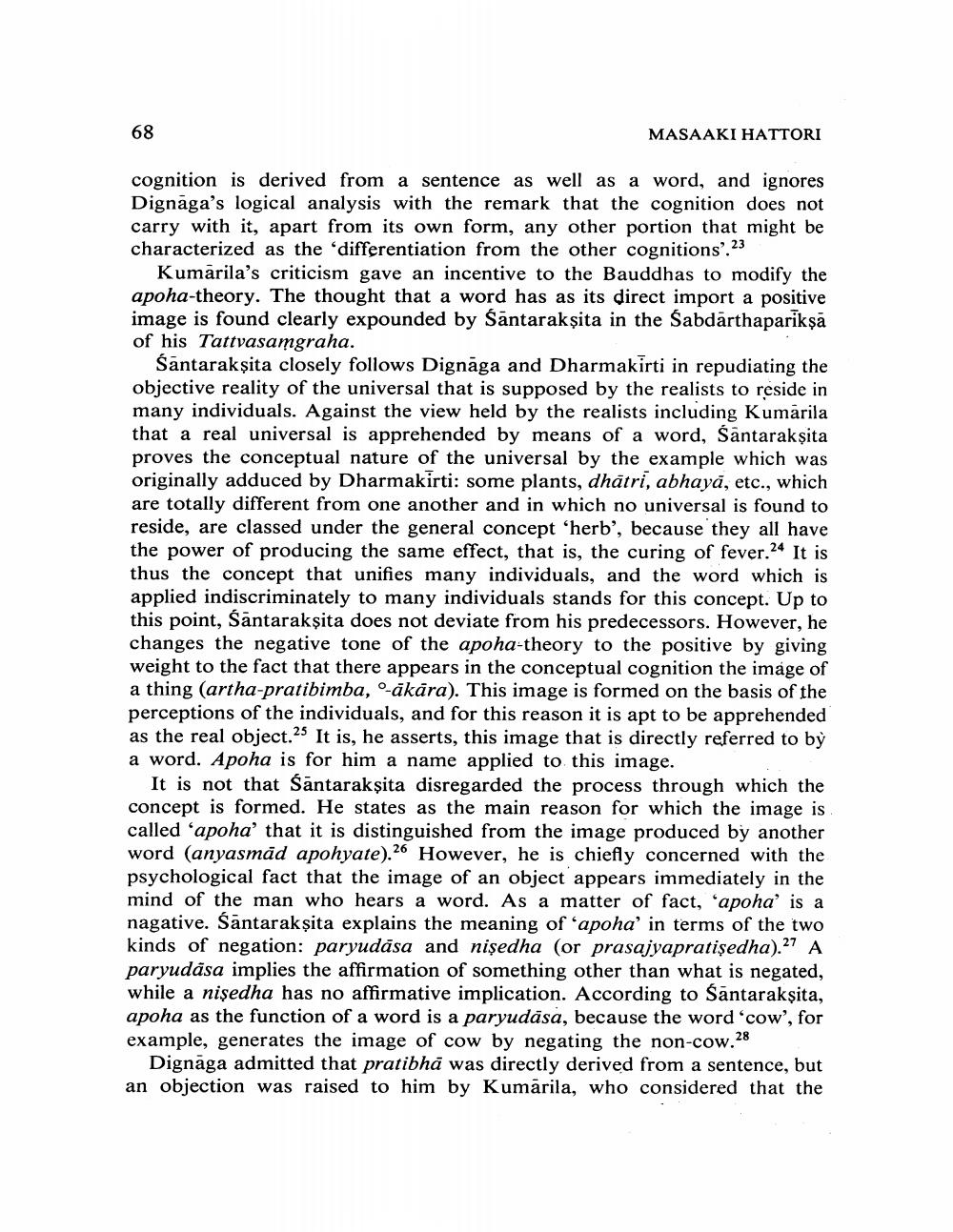Book Title: Apoha And Pratibha Author(s): Masakki Hattori Publisher: Masakki Hattori View full book textPage 8
________________ 68 MASAAKI HATTORI cognition is derived from a sentence as well as a word, and ignores Dignāga's logical analysis with the remark that the cognition does not carry with it, apart from its own form, any other portion that might be characterized as the differentiation from the other cognitions'.23 Kumārila's criticism gave an incentive to the Bauddhas to modify the apoha-theory. The thought that a word has as its direct import a positive image is found clearly expounded by Santarakṣita in the Sabdarthapariksa of his Tattvasamgraha. Santarakṣita closely follows Dignāga and Dharmakirti in repudiating the objective reality of the universal that is supposed by the realists to reside in many individuals. Against the view held by the realists including Kumarila that a real universal is apprehended by means of a word, Santarakṣita proves the conceptual nature of the universal by the example which was originally adduced by Dharmakirti: some plants, dhātri, abhayā, etc., which are totally different from one another and in which no universal is found to reside, are classed under the general concept 'herb', because they all have the power of producing the same effect, that is, the curing of fever.24 It is thus the concept that unifies many individuals, and the word which is applied indiscriminately to many individuals stands for this concept. Up to this point, Santarakṣita does not deviate from his predecessors. However, he changes the negative tone of the apoha-theory to the positive by giving weight to the fact that there appears in the conceptual cognition the image of a thing (artha-pratibimba, o-akara). This image is formed on the basis of the perceptions of the individuals, and for this reason it is apt to be apprehended as the real object.25 It is, he asserts, this image that is directly referred to by a word. Apoha is for him a name applied to this image. It is not that śāntarakṣita disregarded the process through which the concept is formed. He states as the main reason for which the image is called 'apoha' that it is distinguished from the image produced by another word (anyasmăd apohyate).26 However, he is chiefly concerned with the psychological fact that the image of an object appears immediately in the mind of the man who hears a word. As a matter of fact, 'apoha' is a nagative. Śāntarakṣita explains the meaning of 'apoha' in terms of the two kinds of negation: paryudāsa and nişedha (or prasajyapratiședha).27 A paryudāsa implies the affirmation of something other than what is negated, while a nişedha has no affirmative implication. According to Santarakṣita, apoha as the function of a word is a paryudāsa, because the word 'cow', for example, generates the image of cow by negating the non-cow.28 Dignāga admitted that pratibhā was directly derived from a sentence, but an objection was raised to him by Kumārila, who considered that thePage Navigation
1 ... 6 7 8 9 10 11 12 13
